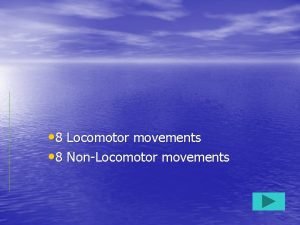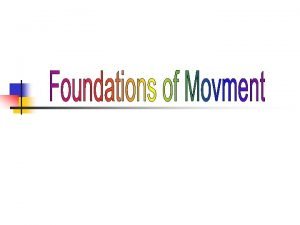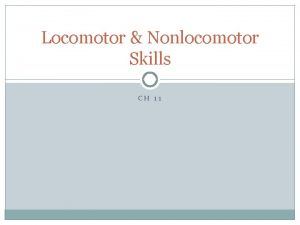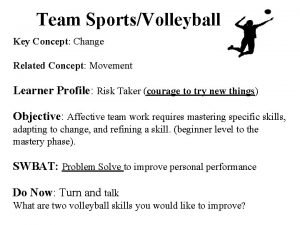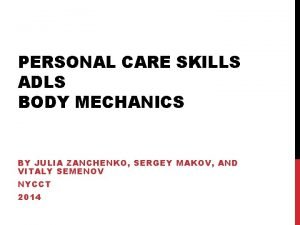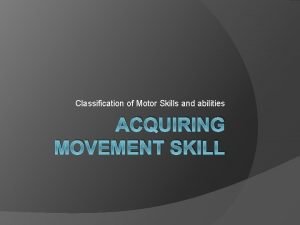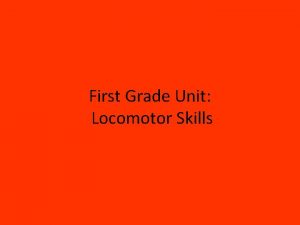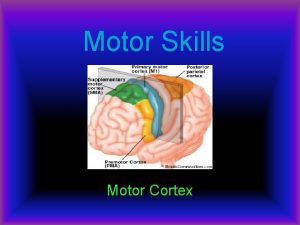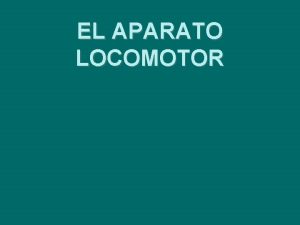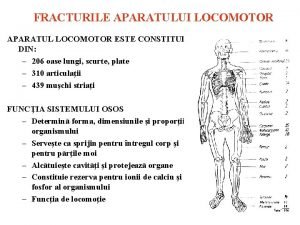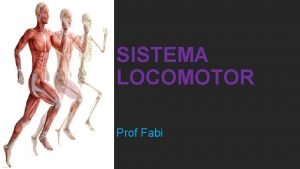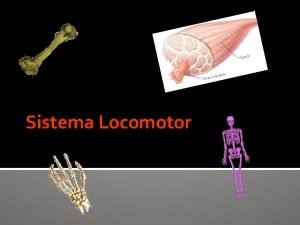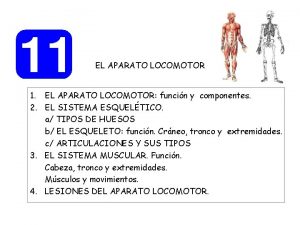8 Locomotor movements 8 NonLocomotor movements Motor Skills













- Slides: 13

• 8 Locomotor movements • 8 Non-Locomotor movements

Motor Skills • • Content- Physical Education Grade- 2 nd The purpose of this instructional powerpoint is to create a visual understanding of the differences between locomotor and non-locomotor movements. Objective-After completing this lesson the students will be able to actively demonstrate the difference between locomotor and non locomotor movements. Standard-A physically educated person demonstrates competency in motor skills and movement patterns needed to perform a variety of physical activities. Accomplishment- Students will be able to recognize specific motor skills that are used in everyday activities.

What is locomotor? ? ? Is…. Movement. Locomotor movement is when you actually move from one place to another.

8 LOCOMOTOR MOVEMENTS • Skip Slide Walk Run Hop Gallop Leap Jump

Examples of Locomotor • Walking to classes. • Playing chase with • • friends. Hopscotch Everyone think of 3 examples. .

What is Non-Locomotor? Non-locomotor is movement on the spot without going anywhere. What does that mean… Think of things you do without moving your feet? ?

Non-locomotor • Twisting • Bending • Swaying • Stretching • Turning • Swinging

Non-Locomotor examples. . Think of 3 things you do everyday that non locomotor…

Locomotor • Walk to a classmate. • Jump over the book. • Skip to the trash can. • Hop to the teachers • desk. Slide to the left. vs. Non. Activity • Bend to pick up a • • pencil. Turn to a corner. Twist to the right. Swing your arm. Stretch your arms above your head.


What locomotor movements do animals do? • Rabbit • Duck • Kangaroo • Turtle-

• Locomotor and non-locomotor skills are important because it provides opportunity for enjoyment, challenge, self-expression, and social interaction.

• Students will be able to demonstrate each locomotor and non locomotor movement. • Students will be able to differientiate between nonlocomotor movements and locomotor movements.
 Locomotor movement dance
Locomotor movement dance Locomotor and non locomotor skills are important because
Locomotor and non locomotor skills are important because What are axial movement
What are axial movement Skill themes and movement concepts wheel
Skill themes and movement concepts wheel 5 body mechanics of locomotor skills
5 body mechanics of locomotor skills Volleyball violations hand signals
Volleyball violations hand signals Horizontal anatomical plane
Horizontal anatomical plane Bodymechanics
Bodymechanics Motor parts name
Motor parts name Pony motor starting method diagram
Pony motor starting method diagram Pony motor starting synchronous motor
Pony motor starting synchronous motor Motor unit consists of
Motor unit consists of Application of synchronous motor
Application of synchronous motor Classification of skills
Classification of skills

